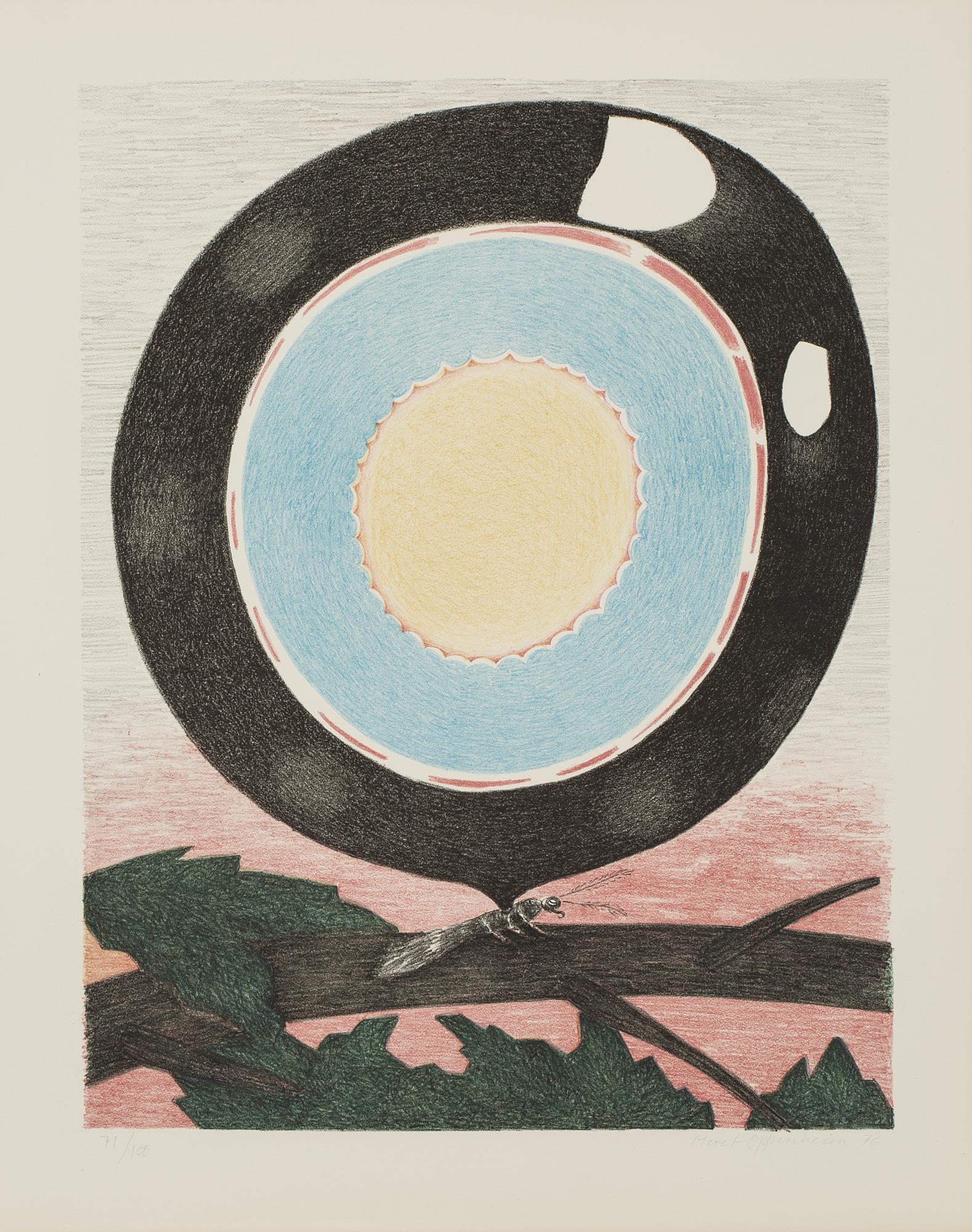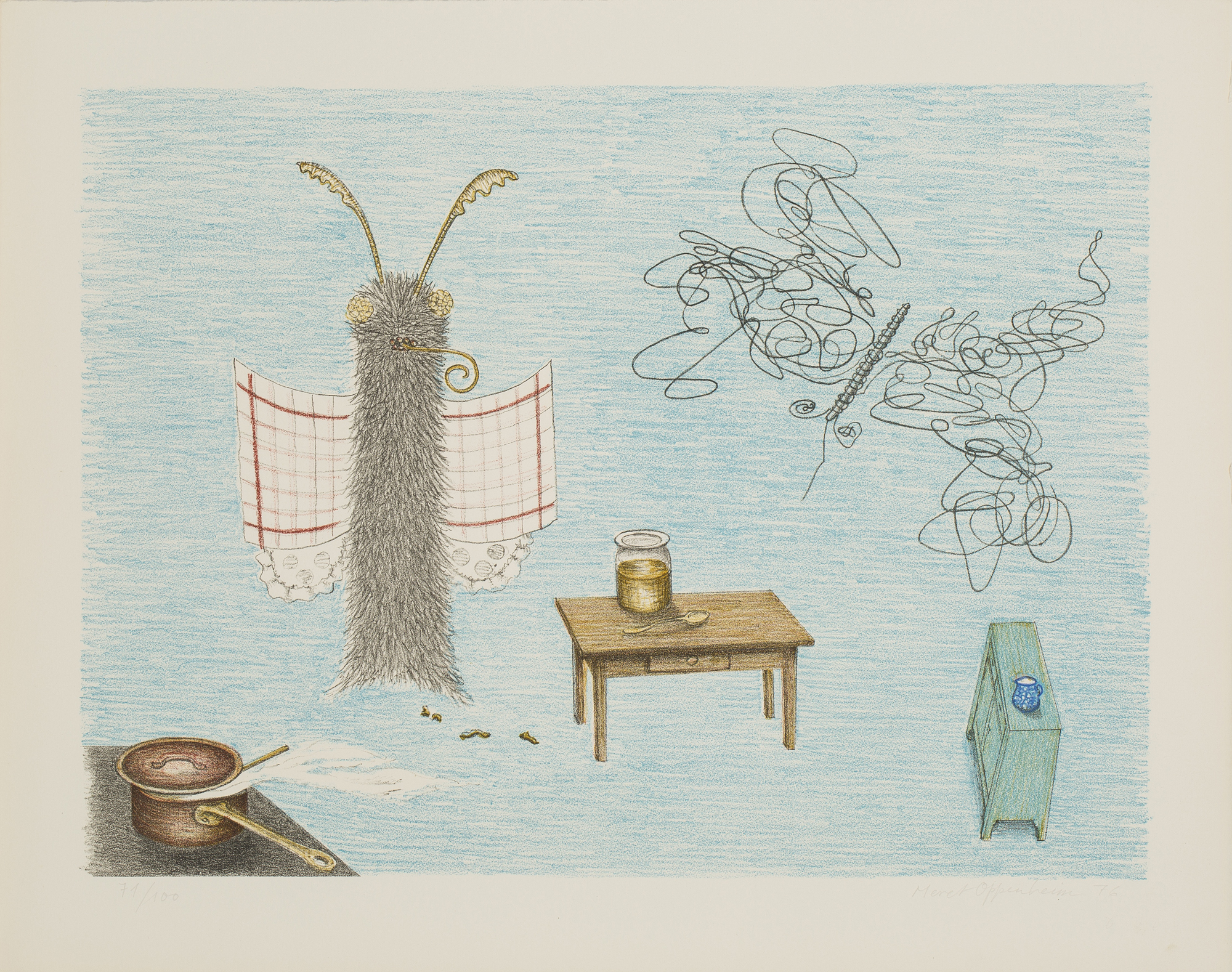Poet, painter, surrealist muse, fascinating personality, enigmatic artist, Meret Oppenheim seems to have lived several lives.
Her magnetic presence in Man Ray’s photographs (1933) made her the icon of a generation. Later praised by peers for her famous Déjeuner en fourrure (1936) – a cup and saucer wrapped in gazelle fur – she soon distanced herself from the surrealists and from Paris, in order to live in unfettered freedom.
Her life and works reflected her interest in dreams, which she saw as a sublimation of the archetypal visions of the unconscious. The intimate images that arose gave rise to innumerable phantasmagorical representations. Her paintings and drawings include both figurative representations and abstract forms with organic echoes.
Meret Oppenheim asserted eclecticism, the proliferation of styles, and rejected all rigid category assignments, whether artistic or social. The objects and forms she invented generally operated on the principle of antagonistic, interlaced realities, and unusual, even fantastical encounters between heterogeneous worlds. She explored the body, its metamorphoses and artifices, its extensions through accessories (gloves, necklaces, shoes, masks), and she transformed objects often associated with femininity, by infusing them with erotic, macabre or poetic connotations.
She developed protean work that borrowed from psychoanalysis, myth and the animal kingdom, and experimented with the most unpredictable techniques. In addition to her own nourishing dreams, the writings of Carl Gustav Jung inspired her thought on the imagination.
Meret Oppenheim stopped working for eighteen years before returning in 1954 with works that reinterpreted her psychological experiences through a wide range of formats and materials, ceaselessly inventing new paths of expression. Her independent spirit and freedom of tone still resonate today with new generations of artists.
Her magnetic presence in Man Ray’s photographs (1933) made her the icon of a generation. Later praised by peers for her famous Déjeuner en fourrure (1936) – a cup and saucer wrapped in gazelle fur – she soon distanced herself from the surrealists and from Paris, in order to live in unfettered freedom.
Her life and works reflected her interest in dreams, which she saw as a sublimation of the archetypal visions of the unconscious. The intimate images that arose gave rise to innumerable phantasmagorical representations. Her paintings and drawings include both figurative representations and abstract forms with organic echoes.
Meret Oppenheim asserted eclecticism, the proliferation of styles, and rejected all rigid category assignments, whether artistic or social. The objects and forms she invented generally operated on the principle of antagonistic, interlaced realities, and unusual, even fantastical encounters between heterogeneous worlds. She explored the body, its metamorphoses and artifices, its extensions through accessories (gloves, necklaces, shoes, masks), and she transformed objects often associated with femininity, by infusing them with erotic, macabre or poetic connotations.
She developed protean work that borrowed from psychoanalysis, myth and the animal kingdom, and experimented with the most unpredictable techniques. In addition to her own nourishing dreams, the writings of Carl Gustav Jung inspired her thought on the imagination.
Meret Oppenheim stopped working for eighteen years before returning in 1954 with works that reinterpreted her psychological experiences through a wide range of formats and materials, ceaselessly inventing new paths of expression. Her independent spirit and freedom of tone still resonate today with new generations of artists.

















